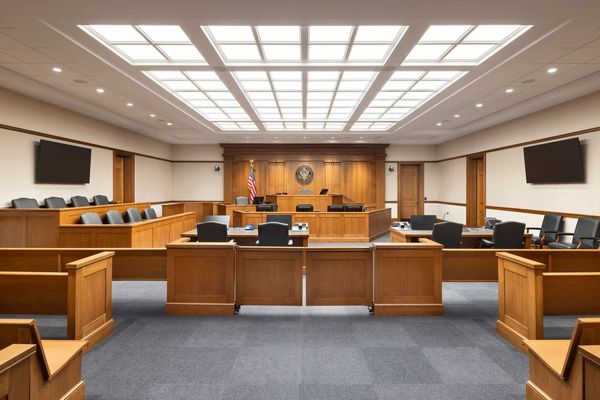
The Coalition’s twin-pronged housing policy is likely to push up property prices to the benefit of existing homeowners, with only modest effects on increasing supply, market analysts say.
Scott Morrison announced the plan on Sunday at the Coalition’s formal campaign launch, with first homebuyers to be allowed to access as much as $50,000 of their superannuation to help muster a mortgage deposit. To boost supply, the policy would also encourage more “empty-nesters” aged over 55 to downsize.
Critics have amplified an admission to ABC’s RN Breakfast by the superannuation minister, Jane Hume, on Monday that allowing people to use their retirement nest eggs was likely to trigger “a bump in house prices”.
Eliza Owen, the head of Australian research at the property data firm CoreLogic, said the super component of the plan would “add to demand, and this could increase the cost of housing”.
“This may be good news for homeowners looking to protect their wealth, or sellers in an environment where housing market conditions are starting to soften, but for first homebuyers it could erode some of the benefit of dipping into their super,” Owen said.
With construction costs rising sharply, it was also “a very challenging time to be incentivising more housing demand in the face of supply-side constraints”, she said.
Past policies to aid first-time entrants to the property market tend to have only short-term effects, CoreLogic data showed. There were also equity issues to consider.
@corelogicau has some interesting analysis on the Coalition's housing policy. One point is to note how first-home buyers have responded to previous temporary support packages. #auspol #ausvotes pic.twitter.com/6qIymwkdPO
— Peter Hannam (@p_hannam) May 16, 2022
In June 2020 the median superannuation balance was about $55,000, while for those between 25 and 34 years of age it was less than half that at $25,000, CoreLogic cited ABS data as saying. At a cap of 40%, the scheme would offer no more than $10,000 on a median level, or a similar amount of support as offered by some state grants.
With a median property now fetching just under $750,000, the plan would help increase the size of a standard deposit only by about 1%, Owen said.
“Unlike the first home loan deposit scheme, or Labor’s proposed shared equity scheme, there are no income caps associated with the Super Home Buyer Scheme, making it far more advantageous for young first homebuyers on higher incomes.”
The independent economist Saul Eslake said the Coalition’s policy made him “want to scream”.
“This reckless inflation of house prices must stop! But of course it won’t,” he said.
Eslake said 60 years of “unambiguous and unequivocal evidence” showed that policies allowing Australians to pay more for housing than they otherwise could resulted in higher house prices rather than higher levels of home ownership. These included first homeowner grants, stamp duty concessions, mortgage deposit guarantee schemes, shared equity schemes, preferential tax treatment for property investors, lower interest rates and reductions in credit standards.
“This scheme will be warmly welcomed by the 11 million or so voters who already own at least one residential property, and especially by the 2 million or so voters who own two or more properties,” he said, adding that a “much smaller number” of would-be first homebuyers with the capacity to take advantage of the plan would also support it.
“But it will be greeted with despair, I suspect, by the majority of the typically 100,000 people a year who succeed in becoming first-time buyers, plus the – presumably larger – number who would like to but have been unable to become first-time buyers,” Eslake said.
Sally Tindall, research director at RateCity, agreed the Coalition’s policy would “probably inflate prices”. “It’s like flicking a switch, where one point in time people suddenly have access to a large sum of money in order to go out there and buy their first home.”
“So that could encourage a flood of buyers in the market who suddenly have an extra lot of money to spend,” Tindall said, adding that none of policies from the major parties addressed the root cause of the problem, “which is that property prices are too high”.
The scheme had the benefit of requiring people to put the money back into super, plus any capital gains, assuming there are any. Still, the experience in New Zealand – with their non-compulsory retirement scheme – was that withdrawals got higher and higher as property prices rose, she said.
Interesting chart on what's happened to New Zealanders' super accounts when they were permitted to use retirement accounts to get into housing. Once you get on this path, it seems to go just one way... #auspol #ausvotes #ausvotes2022 pic.twitter.com/mAkRZuOuxF
— Peter Hannam (@p_hannam) May 16, 2022
The prime minister sought to counter criticism that adding demand to the property market would lift prices, saying it was “a balanced, responsible plan which we’ve thought through, which we think minimises any potential impact on house prices”.
The balance included “freeing-up housing stock with our downsizing policy”, he said. The existing policy that allows people over 65 to sell up and tip as much as $600,000 of a property sale into their super accountswould be lowered to benefit those over 55 if the government were returned.
In march THIS YEAR the Parliamentary Committee looking at housing affordability, Chaired by Liberal MP Jason Falinski found letting people withdraw super to buy a house would “likely increase demand and lead to higher property prices”…March. This year. Chaired by a Lib #auspol pic.twitter.com/jKe8kMA3js
— Richard Denniss (@RDNS_TAI) May 16, 2022
CoreLogic’s Owen said the current policy had registered just 22,000 sales between July 2018 and May 2021. Population data suggests the take-up was just 3.4% of eligible households.
“Many older Australians may love the area where they live, but their area may not have adequate middle-to-high density housing for them to move in to,” Owen said. And “with kids living at home for longer, helping with grandchildren, some may actually find a larger family home still suits them well into their 50s and 60s”.
Tindall, meanwhile, said the property market was anyway cooling off as interest rates rise, with “plenty more to come” from the Reserve Bank.
“[There’s] somewhat of a correction across the property market in certain areas, which could give some first homebuyers breathing space,” she said.
As auction clearance rates tumble, it's worth remembering that investors are betting the cash rate will every month the RBA meets until about February (though economists are not so 'bullish'). #auspol #ausvotes pic.twitter.com/JLVoJDvryU
— Peter Hannam (@p_hannam) May 16, 2022
Cassandra Goldie, head of the Australian Council of Social Service, said the downsizing plan was also inequitable.
“This policy adds to a succession of recent policy announcements that make it easier for wealthy older people to transfer their savings into superannuation to take advantage of generous tax concessions, including removal of the work test for people aged 65 to 74 years so they can keep making contributions to superannuation,” she said.
“At a time when younger generations are struggling to break into the housing market, it is unfair and unacceptable for wealthy older people, who were fortunate enough to buy when prices were much lower, to be handed yet another opportunity to avoid tax by shifting more of their savings into super,” Goldie said.







